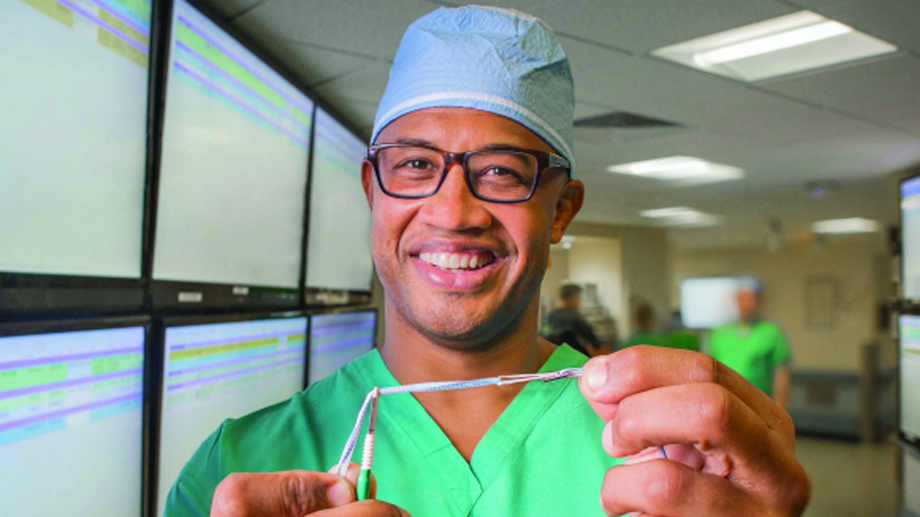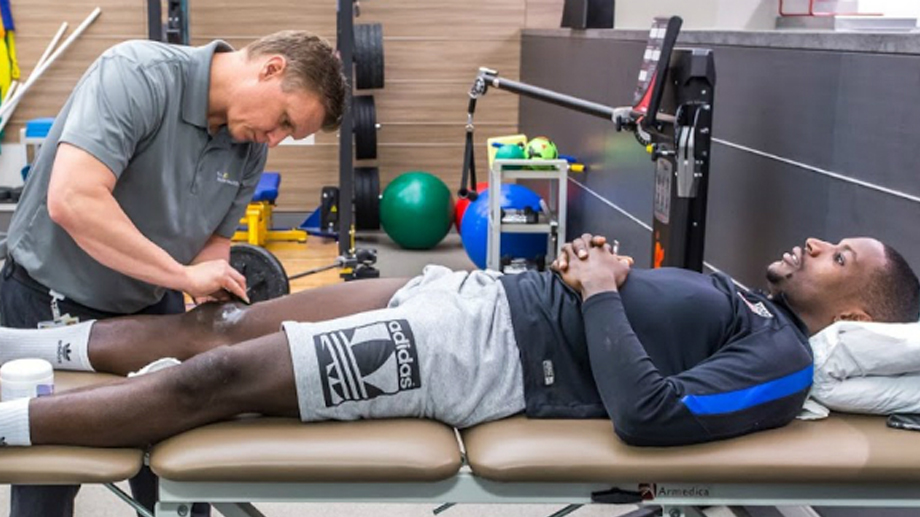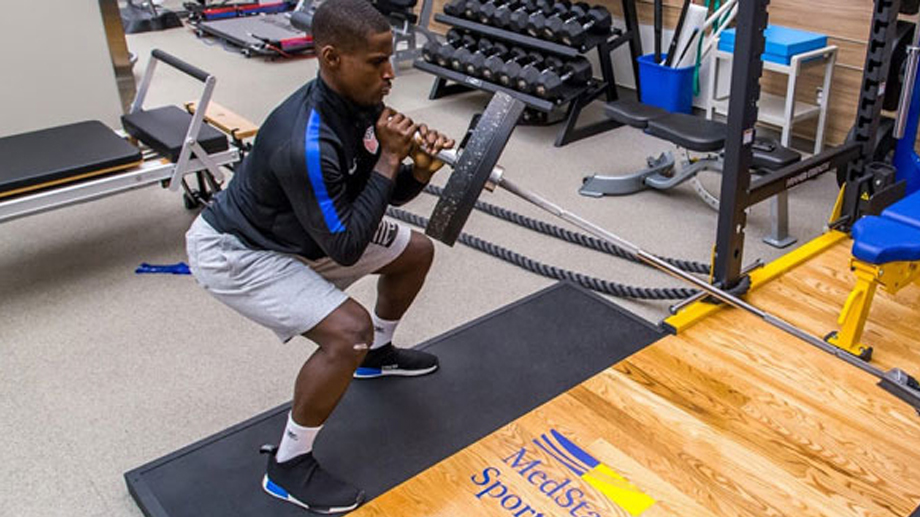Whether you are a beginner, recreational athlete, or an elite professional, you can be sure to benefit from the fully integrated approach to recovery and maintenance of health and wellbeing offered by the MedStar Health sports medicine orthopedic specialists. Our teams of medical specialists—including physicians, sports physical therapists, occupational therapists, and athletic trainers—are dedicated to helping you reach or return to your desired level of activity, as quickly and safely as possible.
What separates MedStar Health from other medical facilities is our unique understanding of athletes and other physically active individuals and the injuries they suffer. We appreciate the sense of urgency and the high level of expectations our patients bring to treatment.
Focus on total performance
We know that to manage injuries appropriately, we need to look at why they occurred. So, in addition to traditional evaluation measures, our assessment includes careful review of training techniques, inspection of equipment, and/or biomechanical activity analysis.
At MedStar Health, our goal is not simply to treat your injury, but also to integrate the injured joint or muscle into the total performance of the body. We emphasize early intervention, learning techniques to avoid complications, and maintaining good physical conditioning, even during injury convalescence. Learn more about our Sports Performance Programs and Services.
A number of injuries are common in the sports arena, and, depending on the sport you play and how often you participate, often require specific treatments. The list of possible injuries is almost as long as the list of activities in which you can participate, but a number of injuries occur fairly frequently in all sports.
Sprains and strains
A sprain occurs when a ligament is stretched or torn, while a strain occurs when a muscle or tendon is injured. Most sprains and strains respond well to conservative therapy, which includes R.I.C.E. and rehabilitation.
-
R.I.C.E. therapy is best applied in the 48 hours after an injury and includes:
-
Rest and reduction in activities
-
Ice applied for 20 minutes at a time, four to eight times a day
-
Compression, such as with elastic bandages
-
Elevation above the level of the heart to decrease swelling (Over-the-counter drugs, such as acetaminophen or ibuprofen, can help decrease pain and inflammation.)
-
-
Rehabilitation varies according to the injury, but may include special exercises and a gradual increase of activity until healing is complete. Some sprains or strains may be severe enough to require surgery to repair them.
Ligament injuries
Ligaments are the tough, flexible tissues that connect two bones or cartilages or hold together a joint. The knee has four main ligaments: the anterior and posterior cruciate ligaments and the medial and lateral collateral ligaments. When the knee is suddenly twisted or directly impact, these ligaments can be injured.
-
Cruciate ligament injuries may respond to conservative treatment; however, most require surgery. The sports medicine surgeons at MedStar Health have significant experience and expertise in a number of surgical options and will discuss the best treatment choices with you.
-
Collateral ligament injuries are more likely to respond to nonsurgical treatments; however, severe injuries or ones that also involve the cruciate ligaments usually require surgery.
Anterior cruciate ligament (ACL) injuries
The most commonly injured of the ligaments is the ACL, and not just by athletes—over 250,000 ACL injuries occur annually within the general population. Tears in the ACL generally result in ACL surgery, extensive physical therapy, significant time away from recreational activities, and a likelihood of arthritis within 10 years.
ACL injury prevention
MedStar Health has developed a comprehensive program to reduce injury risk that involves proper dynamic warm ups, a targeted strengthening program, and a progressive plyometric program. Our mission is to help educate and train as many teams, coaches, and parents as possible to help minimize the risk of an athlete suffering this common injury.
ACL treatment
To initially manage ACL injuries, MedStar Health specialists focus on obtaining a full range of motion of the knee and allowing the swelling to subside. Once these have been achieved, both conservative and ACL surgery treatment options can be exercised.
-
Conservative treatment involves muscular strengthening and often bracing to help stabilize the knee. It is optimal for those who are older or less active, and those who do not plan to return to athletic or vigorous activity.
-
Surgical reconstruction offers a better alternative in preventing recurrent instability and allowing for return to function.
Meniscus injuries
The knee meniscus is a piece of cartilage that serves as a shock absorber between the ends of the leg bones, helps lubricate the joint, and distributes body weight across the joint. Meniscal tears are typically caused by twisting or hyper flexing the joint. These tears can also occur due to degenerative processes caused by aging. Occasionally, these tears may occur simultaneously with injury to the ACL. When the ACL is injured, these tears can result in pain, swelling, and often clicking or catching within the knee.
Minor tears may be treated with therapy and strengthening exercises. More extensive tears often require surgery to reattach the meniscus, replace it with donor cartilage, or remove it. Most procedures can be performed using the minimally invasive arthroscopy techniques that allow shorter hospital stays and decreased recovery times.
Achilles tendon rupture
The Achilles tendon, which joins the muscles of the lower leg, is the largest tendon in the body. A ruptured Achilles is a serious injury that typically requires surgery. MedStar Health surgeons now expertly perform this surgery with minimal incisions, ensuring less pain, faster healing, and excellent long-term results.
Torn rotator cuffs
The rotator cuff comprises the muscles and tendons that hold the upper arm bone in its joint. A torn rotator cuff may respond to non-surgical therapies, but often will require surgery. Arthroscopy often is used to repair small injuries, and minimal incision surgery is now an option to repair complete tears. Read more about rotator cuff conditions here.
Videos
Services and programs
Surgical and non-surgical treatments

What separates MedStar Health from other medical facilities is our unique understanding of athletes and other physically active individuals and the injuries they suffer.
Physical therapy

Physical therapy helps develop, maintain. and restore maximum movement and functional ability to a body threatened by age, injury, disease. or environmental factors.
Athletic training
MedStar Sports Medicine’s team of certified athletic trainers (ATCs) provides high-quality care to professional athletes, student athletes, and weekend warriors.
Sports performance enhancement

For athletes seeking to improve their sports performance, we offer a comprehensive athletic enhancement program. Athletes utilize a periodized program to enhance their athletic abilities, such as speed, agility, power, strength, flexibility, and coordination.
Running injury clinic
Concussion clinic
Our providers
Expert sports medicine care
Getting the care you need starts with seeing one of our sports medicine specialists.











